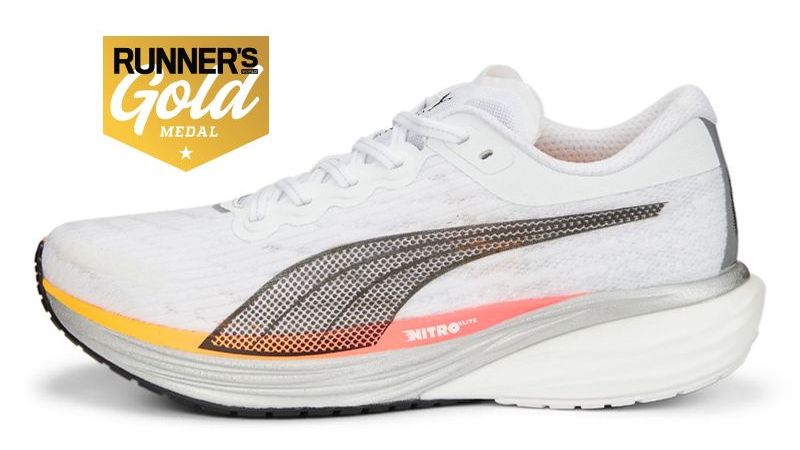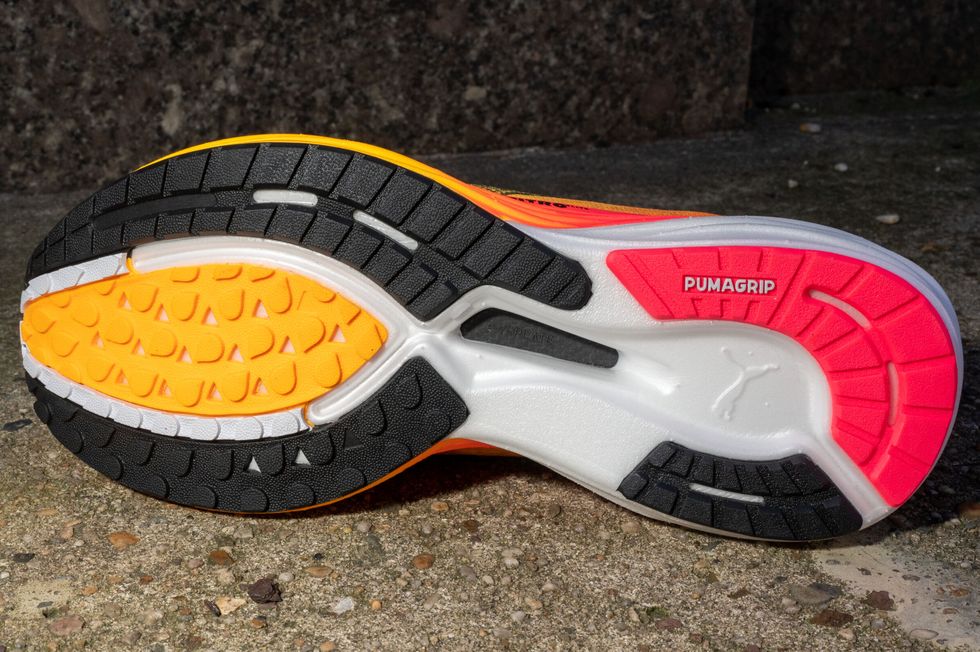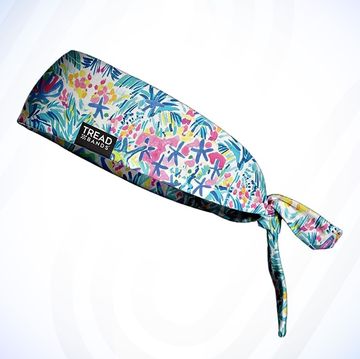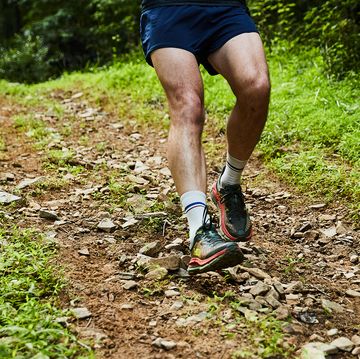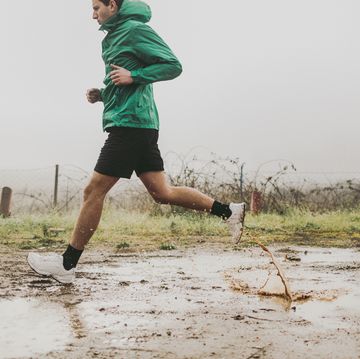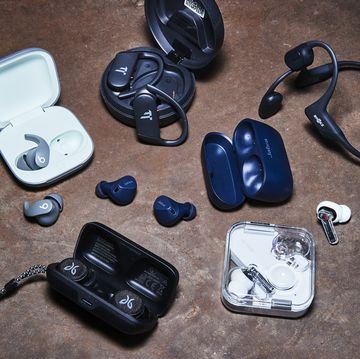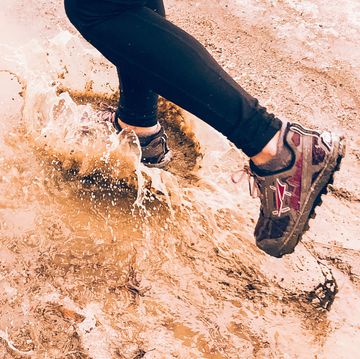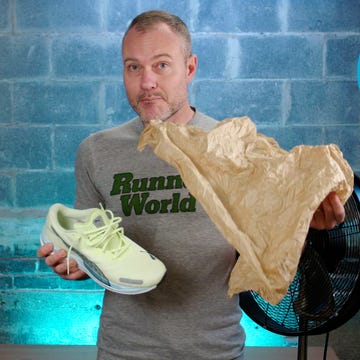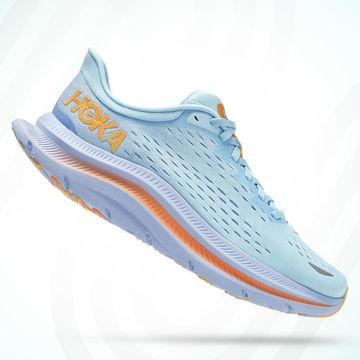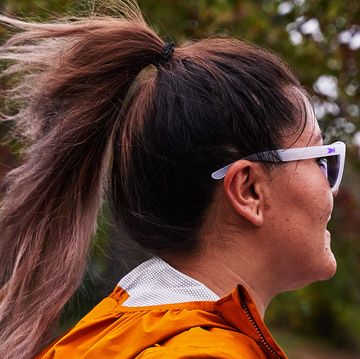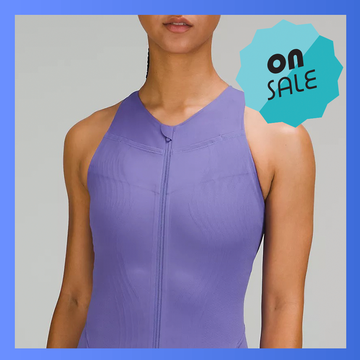The RW Takeaway: Super shoe ingredients at a more affordable price make the Deviate Nitro 2 a propulsive, bouncy, and wallet-friendly trainer.
- New Pebax-based foam is ultrasoft and provides high energy return
- Reshaped full-length carbon plate smooths heel-toe transitions
- Women’s models are tailored for a narrower heel fit and lower instep
Price: $160
Type: Road
Weight: 9.1 oz (M), 7.4 oz (W)
Drop: 8 mm
Buy Men’s Buy Women’s More Images
More From Runner's World

Back in 2018, Puma offered a puzzling assortment of running options—men’s trainers weighing over 12 ounces, spiderweb-like lacing systems split between a shoe’s lateral and medial sides, and blocky, three-piece midsoles. But the numbers from mechanical testing in our lab told an interesting story. The shoes’ energy return was among the highest available at the time. Puma had the technology—it just needed more time to get the packaging right.
The brand’s 2021 running line relaunch signaled that the wait was over. We gave the Deviate our top awards, and pros like Molly Seidel, Dakotah Lindwurm, Aisha Praught-Leer, and Annie Frisbie have joined Usain Bolt as Puma athletes who’ve raced—and medaled—in the company’s shoes. Likewise, the Deviate model keeps getting better.
Most times, a shoe’s sophomore attempt should immediately course-correct for any glaring issues and spark a little excitement without straying too far from the original. For the Deviate, that meant fixing the upper, upping the ante on the midsole, and leaving the durable outsole rubber largely untouched.
The main concern most testers had in the first Deviate was the heel fit. Fairly thick pads on the inside of the collar were designed to help lock the back of your foot down to the sockliner. But the pads’ size and shape actually made the shoe slip or rub. That’s been remedied for both the men’s and women’s models, though the latter retains its essential fit tweaks for ladies’ narrower heels and lower insteps. A women-specific adjustment was a wider forefoot, though I could not feel the change. My digits were squashed in the torpedo-shaped toebox, despite having some empty space at the tip of the shoe.
Runners with long and narrow feet, like one tester who reports having high arches, had a comfier experience. “While the Deviate is narrow, the upper materials provide an ideal wrap around the foot that minimizes slip without feeling abrasive,” he said, giving the shoe high scores for fit and comfort.
The shoe’s narrow waist, combined with an ultrasoft and bouncy midsole, can feel less stable if you overpronate. But those with neutral feet, like myself, gladly accepted some wobbliness for such a fun, propulsive ride. The shoe has swapped the top layer of TPE-based, nitrogen-injected foam for the more premium, Pebax-based Nitro Elite foam used on Puma’s high-end racers.
The carbon-composite plate gets a boost, too. Puma trimmed the outer corners of the plate under the heel so the shoe lands more smoothly, and deepened the fork in the toe. (This could explain why some testers felt less stable in this version but appreciated the greater flexibility through landing and toe-off.) Considering the price hasn’t changed a penny, the Deviate is one seriously impressive and budget-friendly top performer right now, even more so than it already was last year.
“As a runner who has trained in many Adidas Boost shoes, I found the Nitro foam has a similar soft feel. The carbon-fiber plate added an additional ‘pop’ to the otherwise extremely soft ride,” one tester said. “The extremely shock-absorbent foam coupled with a full-length plate is the perfect combination for me. It allows for a plush landing you’d expect from an Adidas Boost trainer, while not sacrificing the energy return for faster turnover. The landings are soft, but the cushioning still feels responsive, with an effortless propulsion forward.”
Another Tester’s Take
Tim C. | Tester since 2013
Arch Height: Average | Pronation: Neutral | Footstrike: Midfoot
“My biggest concern was with this shoe’s stability and support. With each step, it felt like my feet were supinating (rolling outward) and that I was putting more pressure on the outside of my ankles and knees. It left me feeling a little cautious, as I am still recovering from an injury to my patellar tendon.”

